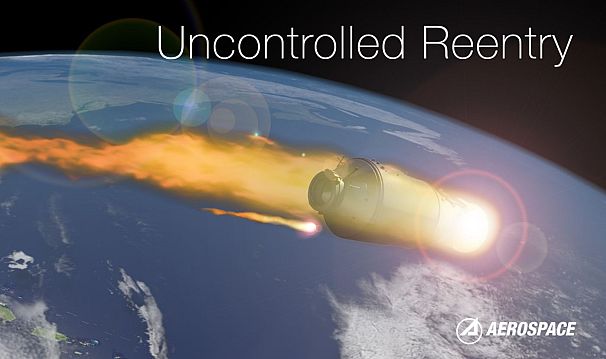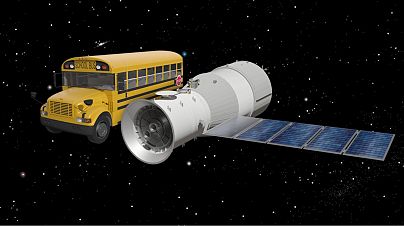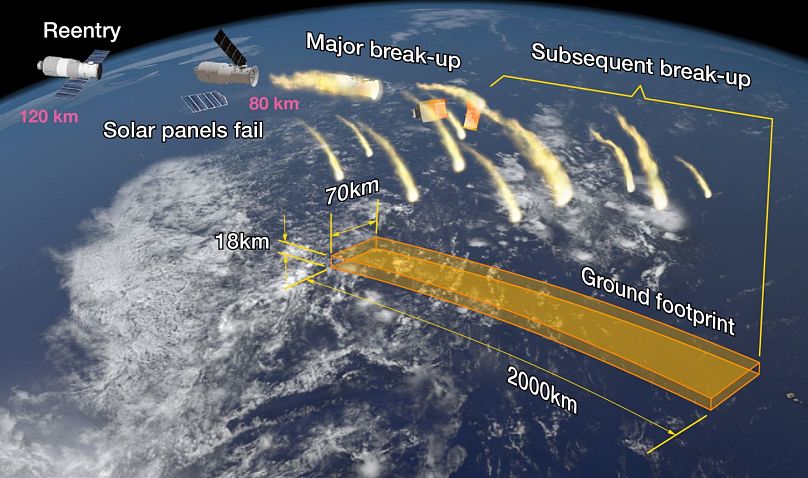The Tiangong-1 space station is hurtling back to Earth on Monday but no-one knows exactly when or where it is going to crash.
China’s first space lab – the Tiangong-1 or “Heavenly Palace” – is tumbling back towards Earth and is expected to crash on Monday. No-one knows exactly where, no-one knows exactly when. However, experts say the chances of it doing any harm are extremely slim.
The unmanned space station is in orbit above the Earth and is believed to be out of control.
When and where will Tiangong-1 come down?
As of Sunday, Tiangong-1 is predicted to re-enter the Earth’s atmosphere and crash after 01.25 CET on Monday morning. The estimate contains a margin for error of 16 hours, so it could make its fiery descent anytime between Sunday and Monday night, European time.
If the exact time is not known, then the location is even more uncertain. The spacecraft is making dozens of orbits of the Earth over several days, hitting speeds of 27,000 kilometres an hour.
The Aerospace Corporation, which carries out research for the United States, says confidently that the object will re-enter somewhere between 43 degrees North and 43 degrees South latitudes, which covers vasts parts of the Earth. The ranges that are not covered include Antarctica and the bottom tip of South America, northern Europe, northern North America, the Arctic and parts of central Asia.
Engineers say the fact the spacecraft is tumbling makes it hard to predict how atmospheric drag will affect it. “It is the upper atmosphere that will create a drag that will eventually bring down the station. That drag is very, very hard to understand and predict,” Holger Krag, head of the Debris Office at the European Space Agency told Reuters TV.
How big is it — and will it hit me?
Tiangong-1 weights 8.5 metric tons and has been described as being the size of a school bus. That is tiny compared to the International Space Station, for example. However, it is larger than most man-made debris re-entering the Earth’s atmosphere.
When it comes down, the craft is expected partly to burn up, with what remains breaking up into fragments covering perhaps thousands of square kilometres.
China's foreign ministry said on Friday that it was unlikely that any large parts of the space lab would reach the ground when it fell to Earth.
“It is highly unlikely that debris from this re-entry will strike any person or significantly damage any property,” says Aerospace Corp. “The likelihood of any one person (i.e. YOU) being struck by debris is still far less than winning the Powerball Jackpot.” Experts have put the chances of being hit at much less than one in a trillion.
“There have been 13,000 tonnes of space hardware coming down in the whole history of space flight and there has not been a single casualty reported,” says Krag.
Aerospace Corp. reports that a Ms Lottie Williams of Tulsa, Oklahoma was struck by a small piece of space debris in 1996, but was unharmed.
“There is no need for people to worry,” said a recent article by the China Manned Space Engineering Office (CMSEO), as reported by the state-run Xinhua news agency.
However, it’s thought the spacecraft may contain a highly toxic substance called hydrazine that might survive re-entry — so any debris found should not be approached or touched.
What am I likely to see, if anything?
It will take a lot of luck to catch a glimpse of the Heavenly Palace’s final moments.
It’s thought that anyone who does happen to be looking at the right part of the sky when the spacecraft makes its descent will likely see a glowing object moving for several minutes, like a slow shooting star.
Tiangong-1 “won’t crash to the Earth fiercely, as in sci-fi movie scenarios, but will look more like a shower of meteors,” said the CMSEO article.
Anyone who does witness it is encouraged to report the sighting here.
Is the Heavenly Palace out of control?
China has never admitted such a thing, but experts don’t believe it.
In March 2016, an official Chinese statement said Tiangong-1 had terminated its data service. Scientists took this to mean it had stopped working.
Subsequent communiques to the United Nations promised to provide a “timely forecast of its re-entry” and that Beijing would “continue to closely track and monitor” Tiangong-1’s operation.
China vowed to publish regular updates via the China Manned Space website — but this has gone quiet on the matter.
As late as this year a top Chinese engineer claimed that the spacecraft was not out of control.
“It is unlikely that this is a controlled re-entry. Although not declared officially, it is suspected that control of tiangong-1 was lost and will not be regained before re-entry,” says The Aerospace Corporation.
Why was Tiangong-1 sent into space?
Launched in September 2011, the Heavenly Palace docked with other spacecraft and carried out a series of experiments on technology and space exploration. It has been visited by two crewed missions.
Its mission was part of a multi-billion-dollar space programme to put a permanent manned space station into service around 2022, according to the CMSEO.














